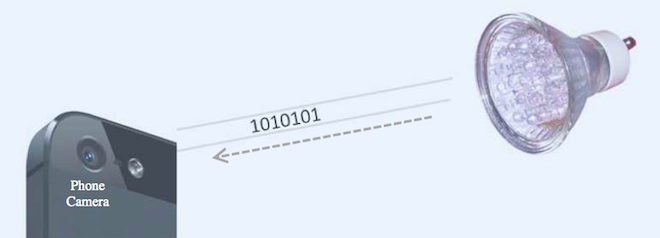One of the most popular forms of photography if you look at the number of pictures if not actually the number of photographers, is smart-phone photography.
I enjoy it myself and the camera on my phone is the feature I prize the most. However there’s a technology that intends to disrupt all that. It’s called ‘line of sight advertising’.
Line of sight advertising is basically an extension of what Intel calls ‘visual light communication’ and it operates from normal practical light sources like LEDs.
If you imagine a morse code system which is a series of bleeps to convey information, then visual light communication systems are an array of LEDs in-situ in the environment. They would be positioned around a location and to the naked eye would simply resemble normal light sources. To the sensor in your camera however, these LED arrays would be interpreted as data, which would trigger an advertisement to be downloaded and etched into your photo.

The technology is actually very basic and cheap to make, and shares a lot of similarities with already existing augmented reality technologies. In the paper by Intel’s R&D labs I’ve seen, the company describes the need to formalise a standard for the technology.
How about just… Not… doing this?
The last thing I want in my smart-phone photos or Google Glass display are faux-3D digital advertising banners.
Real advertising is already all around us and it has ruined the atmosphere of our cities from a photographic point of view; they’re are beginning to resemble Disney World.
This technology I am sure you will be able to turn off at first, but we should realise as a society that once something is invented it cannot be un-ivented and cannot always be switched off. Anyone tried turning off the internet recently?
We accept the deluge of advertising around us as normal, we’re so used to it that we don’t think twice about it appearing in the background of a photo. I always try as much as I can with my street photography to either use the advertising on the street as purposefully as I can or (more rarely) aesthetically, but often I just try and avoid it altogether. That is becoming more and more difficult and I think the smarter cameras become the more avenues ugly consumerism has to reach us. Capitalism is a system that when beautiful is beautiful by accident, but mostly has no aesthetic concerns, the primary concern being to make money.
The LED industry, camera industry and semiconductors industry has a very keen interest in creating ever more invasive solutions for their wares.
Beware.
Source: IntelLabs study group document (PDF) via Image Sensors World


